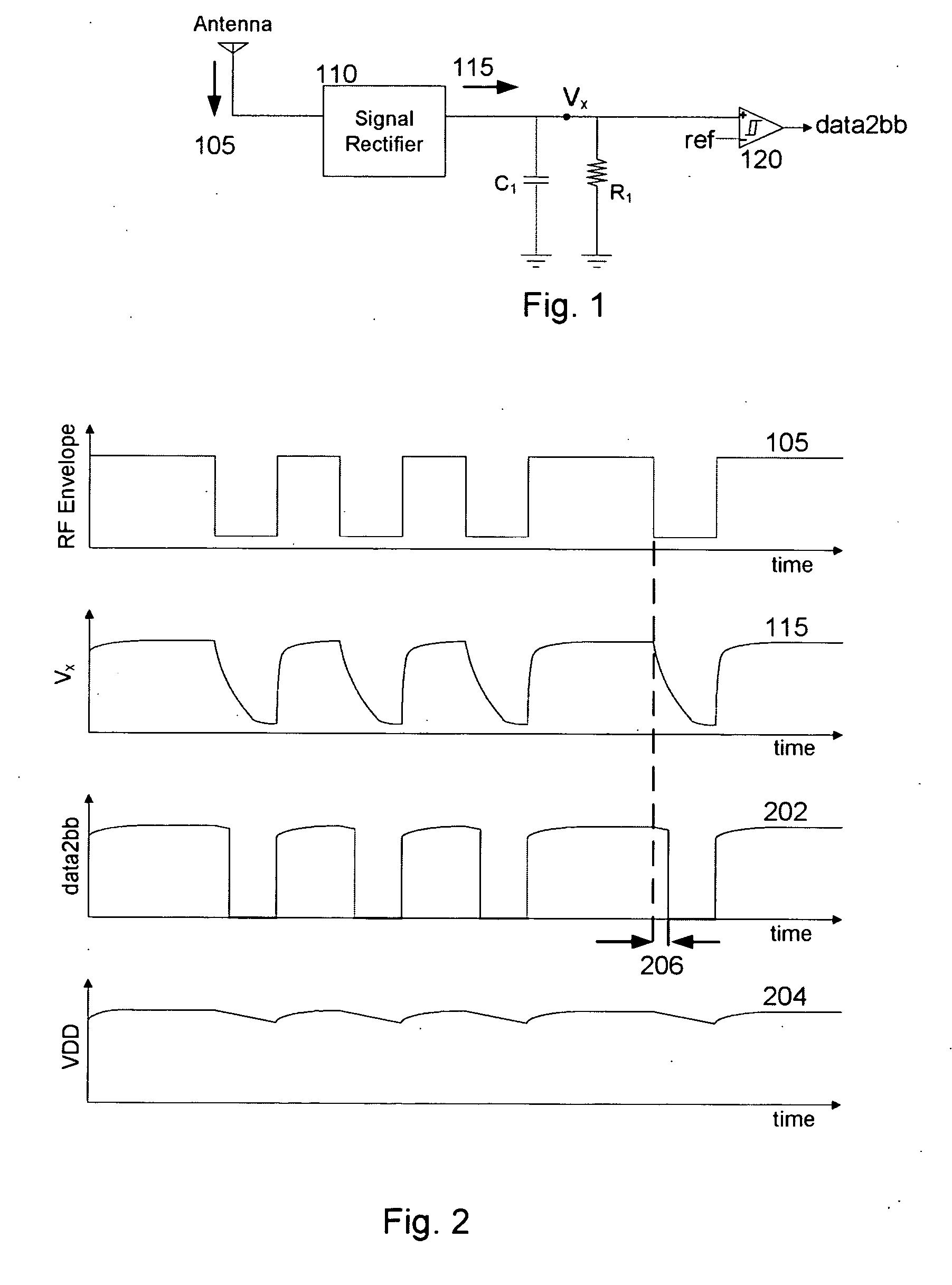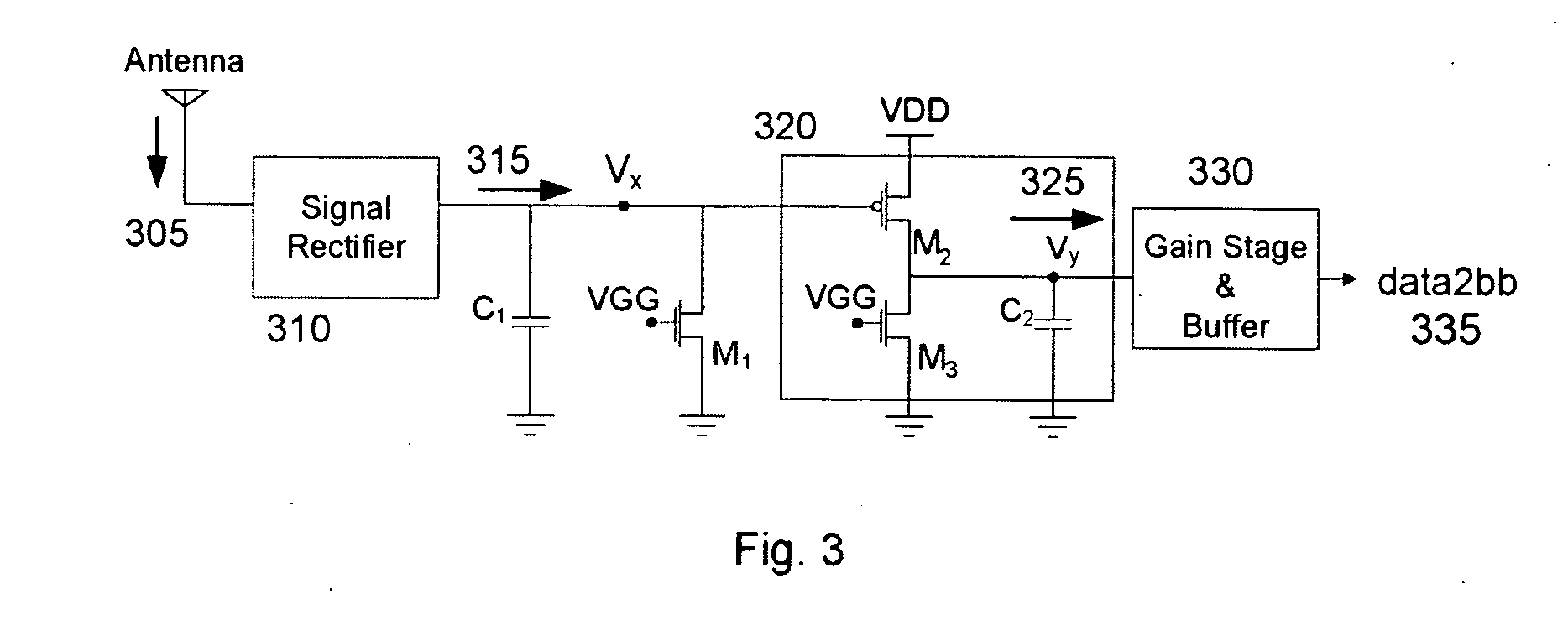Envelope detection circuit for low power communication systems
a low-power communication system and detection circuit technology, applied in the field of envelope detection circuitry, can solve the problems of large capacitors occupying a significant amount of space, ripples on the rectified supply vdd can be detrimental to the functioning of the rfid tag circuitry, and large capacitors affecting the operation of the circuit, so as to achieve high demodulated signal fidelity and low power consumption
- Summary
- Abstract
- Description
- Claims
- Application Information
AI Technical Summary
Benefits of technology
Problems solved by technology
Method used
Image
Examples
Embodiment Construction
[0016] As an exemplary embodiment, the envelope detection circuit of the present invention is now illustrated in terms of an RFID receiver. Those skilled in the art will appreciate that the envelope detection circuit is not limited to this particular application, but may be employed in a variety of amplitude modulated receivers in which minimal power consumption is desired.
[0017]FIG. 3 illustrates an envelope detection circuit in accordance with the present invention. Shown are the modulated signal 305 at the input, the rectified signal Vx 315, the compensated signal Vy 325, and the demodulated baseband signal data2bb 335. The envelope detection circuit includes a signal rectifier 310, first and second capacitors C1 and C2, and first, second and third transistors M1, M2, and M3. The signal rectifier 310 may include one or more diodes, diode-connected transistors, or other signal rectifier means. In a particular embodiment, capacitors C1 and C2, and transistors M1, M2, and M3 are mo...
PUM
 Login to View More
Login to View More Abstract
Description
Claims
Application Information
 Login to View More
Login to View More - R&D
- Intellectual Property
- Life Sciences
- Materials
- Tech Scout
- Unparalleled Data Quality
- Higher Quality Content
- 60% Fewer Hallucinations
Browse by: Latest US Patents, China's latest patents, Technical Efficacy Thesaurus, Application Domain, Technology Topic, Popular Technical Reports.
© 2025 PatSnap. All rights reserved.Legal|Privacy policy|Modern Slavery Act Transparency Statement|Sitemap|About US| Contact US: help@patsnap.com



